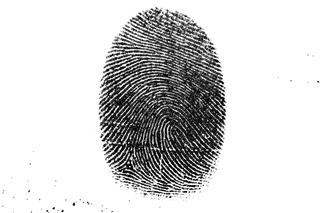
Why Do We Have Fingerprints?
The tiny ridges of skin do a lot more than just identify criminals.

A document from China’s Qin Dynasty — 221 to 206 B.C. — titled “The Volume of Crime Scene Investigation—Burglary” first described how handprints could be used as evidence of criminal doings.
Two millennia later, in June 1892, Francisca Rojas, an Argentinian woman, became the first person in the modern world convicted of a crime based on fingerprint evidence — a crusted, bloody print on the bedroom door connected her to the murder of her two young children. Just 35 years later, American mobster Augustus “Gus” Winkeler was one of the first criminals who attempted to alter his prints in order to evade detection. It didn’t work — the prints hadn’t been wholly disfigured and were still identifiable.
The loops, whorls, and arches that swirl on our fingertips have been so long associated with identification and crime that it’s easy to forget they serve a more critical, evolutionary, and biological purpose. At just 17 weeks’ gestation, fetuses have a unique and completely developed set of prints — but scientists are split as to just what their purpose is.
“People have had two ideas about fingerprints: that they help improve grip, and that they help improve touch perception,” Roland Ennos, Ph.D., a biomechanics researcher and visiting professor of biology at the University of Hull, U.K., told LiveScience in 2019.
Ennos subscribes to the former theory, the idea that the tiny ridges that compose our fingerprints create friction and thus grip — much like the soles of sneakers or the treads of a tire, the ridges of which expand the surface area and increase grip. This is true for primates, for whom print ridges come in handy when on the move.
But Ennos’s research doesn’t entirely back this up for humans. In a set of experiments designed to test the friction and traction of human fingertips, his team actually found that “the actual area of contact was reduced by the fingerprints, because the valleys didn’t make contact,” he said. Ennos and others still think fingerprints might aid grip, especially in wet, slippery conditions, but it’s a theory that remains unproven, in part because it’s difficult to test.
Related on The Swaddle:
Why Do We Blink So Frequently?
Increasingly, evidence — the scientific, not criminal kind — is pointing to fingerprints playing a sensory role. A new study, published in the Journal of Neuroscience journal, attempted to map the tens of thousands of touch neurons in the human hand. These neurons are each connected to a tiny surface area of skin — a hotspot, so to speak — that can detect touch, vibration, pressure, and other stimuli. These hotspots, only 0.4 millimeters wide, the researchers found, are the exact width of a single fingerprint ridge. What’s more, when the researchers plotted out these hotspots, they created the same patterns of arches, whorls, and loops as the individuals’ print.
“[Fingerprints] really help us get very detailed information about what we touch,” the study’s lead author, Ewa Jarocka, Ph.D., of Umeå University in Sweden, told New Scientist.
That still doesn’t explain the purpose of the ridges or their patterns, however. Other research suggests our fingertip ridges vibrate when we touch a surface, which helps the perception reach nerve endings deeper under the skin and thus fine-tunes our sensations. The same study found the vibrations of a ridged and patterned fingertip are 100 times more powerful than those of a smooth fingertip. The looping, whorling, and arching features are likely to ensure at least some ridges are always perpendicular to a surface — and thus able to vibrate in response to touching it.
Whatever the sensory or functional role — if any — fingerprints play, they’ll continue to be a trusted means of identification. Recent forensic research suggests fingerprints can contain trace amounts of all sorts of chemical information — a molecular signature, so to speak, as well as a physical one, of what you’ve eaten and touched. Ultimately, perhaps that’s their purpose — to set us each apart. No two people, not even identical twins, have the same set of fingerprints. In a world where nothing is new under the sun, a fingerprint always is.
Liesl Goecker is The Swaddle's managing editor.
Related


Fishing by Dragging Nets Over the Ocean Floor Releases as Much Carbon as Air Travel: Report
